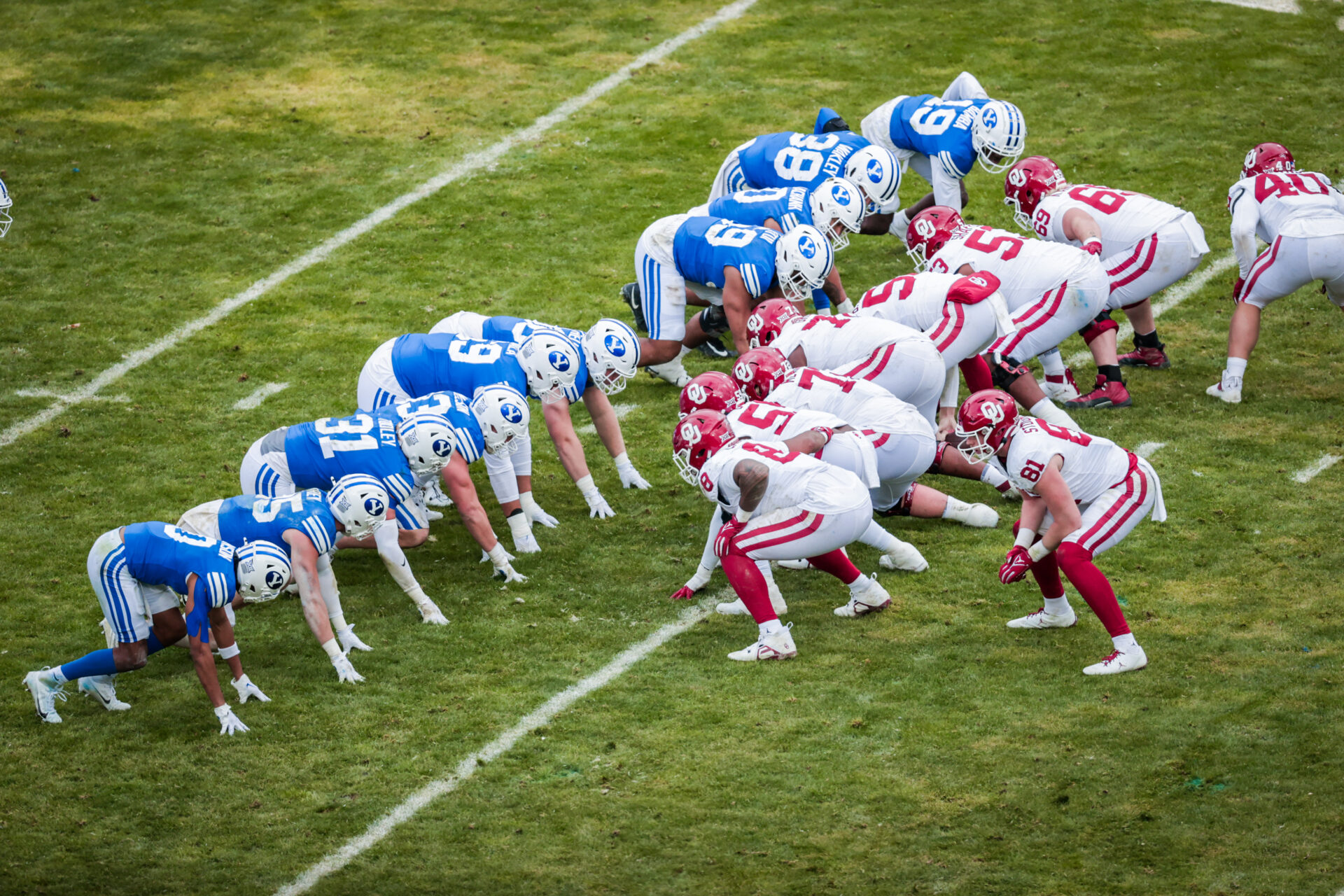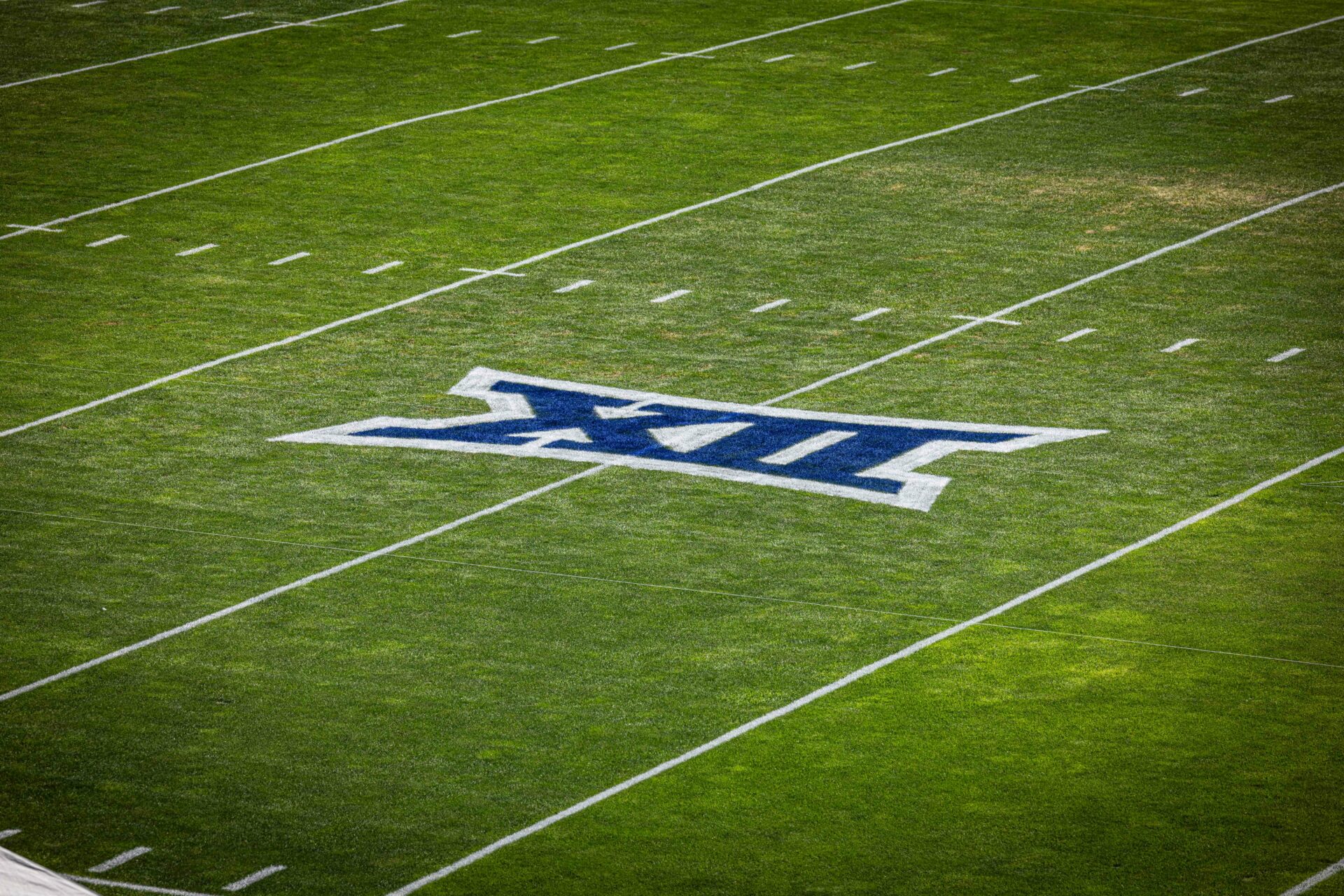Keep Off the Grass: A New Field is Coming to LaVell Edwards Stadium
In the Big 12, no update is too small and no upgrade goes unnoticed. The newest upgrade for the LaVell Edwards Stadium is the new grass field, coming spring 2024.
After holding up for 90 home games, the grass in the stadium will be torn up and laid with new sod this upcoming spring. The field, whose base consists of sand laying over gravel, is made up of Kentucky bluegrass. This species is classified as a “cool season” type and is the most common and best grass for sports fields in the Northern regions of the USA. The new field will also be made up of sand and gravel, and Kentucky bluegrass on top.
The renovation entails carefully taking out the old grass and its roots and the top few inches of sand, and finally laying new sod in its place. Bryan Hopkins, a BYU professor specializing in sports field management, has played a key role as a partner for the installation and care of sports fields with BYU Grounds and Athletics.
“I was the architect for this field when we designed it 15 years ago. BYU grounds did most of the installation. I work with many teams and there isn’t anyone superior to our Certified Sports Field Managers. They are a huge part of the reason why the field has been successful for so long,” said Hopkins.
The design used by Hopkins and BYU grounds underneath the Kentucky bluegrass has a specialized sand-based root zone with a perched water table. This system is also used in high-end sports fields and golf course greens. It holds enough water to enable grass to grow but any excess water will flow down to the layers below. This allows for games to be played during a rain storm without turning to mud. The soil also doesn’t compact under the weight of heavy foot/equipment traffic. The size, shape, and depth of the sand and gravel are very specialized in order to achieve this level of exceptional performance.
“It holds water in the root zone, but as soon as there is too much water it starts draining,” said Hopkins. “One of the keys for it to work is you need the right depth of sand, which has been exceeded now and is one reason we need a resurfacing.”
Maintenance of this field includes a process called “top dressing”, where sand is broadcast onto the field. Over the past 15 years of this field, this extra sand has built up below the grass, resulting in too much sand, obstructing the roots from reaching the perched water table for draining.
Hopkins also detailed the other reason the field needs to be replaced, which is due to the infestation of annual bluegrass, a weed that is the number one problem in short-mowed sports and golf greens. “A normal Kentucky bluegrass yard thrives when mowed to about 2 to 3 inches consistently,” continued Hopkins. “However, sports field with this grass are generally mowed 3/4 and 1-1/4 inches.”
According to Hopkins, annual bluegrass has been taking over the field in LaVell Edwards Stadium since 2022, as expected. Despite BYU employing methods to avoid this, the weed eventually wins the battle and destroys the field. This infestation has become especially problematic over the past two seasons.
Annual bluegrass is a weed without rhizomes, leaving the roots short and the infested grass more susceptible to coming out in chunks during sporting events. The weed is an unsightly yellow color compared to the rest of the lush green field. For example, it became noticeable this season in a very large patch near the North end zone. “It looks like someone dropped a bucket of yellow paint out there,” said Hopkins.

Hopkins consults with many teams regarding their sports fields and routinely states that these fields should be resodded after 7 years. The excellent care and management of this field stretched out that time frame, but it became apparent that it had to be replaced to avoid the growing problem of aesthetics and, more importantly, players slipping on the field. Divoting wasn’t terrible, but definitely increased this past season.
Some fans would not agree, as many people commented on the state of the field and how it may have affected football games this past season.
David Lish, an avid BYU football fan, saw the unusual slipping and said, “They were slipping and sliding out there. It has made a great field, but the school needs to invest in new field. I’m surprised there were’t more injuries.”
Logan Wilding, UVU Grounds Superintendent, commented on how the field suffers through the temperatures of Provo winters, citing “condensation and root damage” as the likely cause of the extra water on the field that led to more slippage.
However, Hopkins stated that dew can be a problem for cool, night games, such as was the cause of some slipping that occurred during the home game against Iowa State. The soil was not too wet, as some speculated. The field manager had the moisture set correctly, but unfortunately, he could not control the dew coming in.

Hopkins also commented on the controversial topic of artificial “turf” vs natural grass fields. Referencing an article titled “The Killing Field”, Hopkins expressed just how dangerous artificial turf fields can be. “Athlete and participant safety is the most important to us,” said Hopkins. “It is complex and I could talk about all the pros and cons for hours, but the overall consensus is that the data shows that artificial turf is not as safe as a well-maintained natural grass field.”
“Turf would be the worst option ever,” Zach Hair, a BYU football fan, commented on the topic. “Players have a 28% chance of injury on turf because the ground is supposed to just give when you press on it, turf doesn’t. You either slip, which can be prevented by the right cleats, or you tear ACLs on turf.”
Hopkins referenced the 2022 Super Bowl, when Odell Beckham Jr. played for the Rams as a wide receiver. Attempting to catch a pass from Matthew Stafford, his left foot was caught in the artificial turf field, tearing his ACL and causing him to miss the rest of the game. Many professional athletes have been affected by the type of field they play on and whether it has been well maintained. The vast consensus of professional athletes is that they are very against artificial turf, with a tremendous increase in their activism against it recently.
BYU football fans on twitter were quick to call out and blame the slipping on poor field management or wearing the wrong cleats. The problem has many layers, but Hopkins states that experts in sports field management are aware that the real problem is a weedy grass that is a natural part of aging of short mowed sports fields and it is just simply time for a do over. Sports field are difficult to maintain, and BYU has done well at providing a safe place for fans and players to enjoy home games at the LaVell Edwards Stadium.

